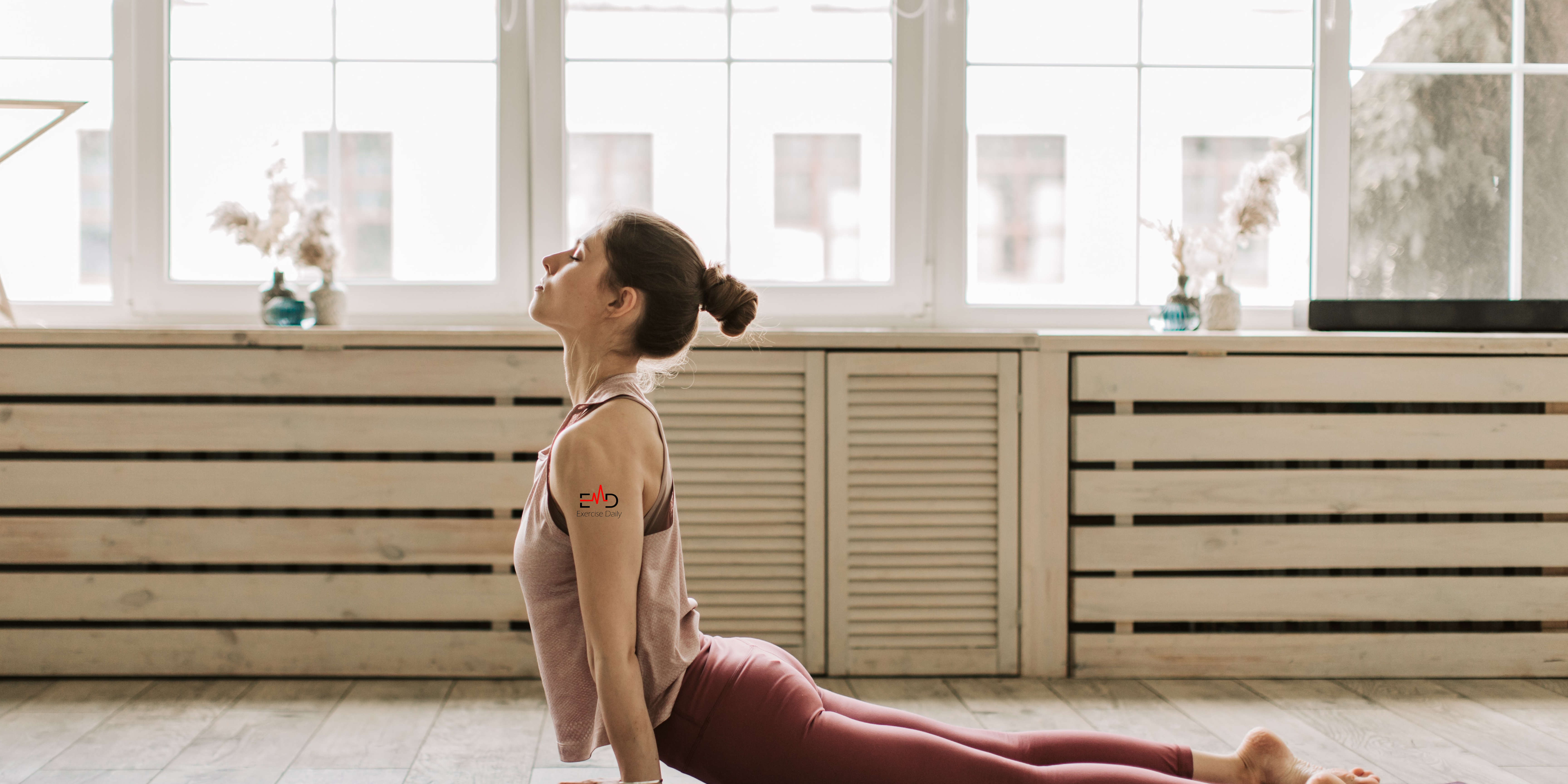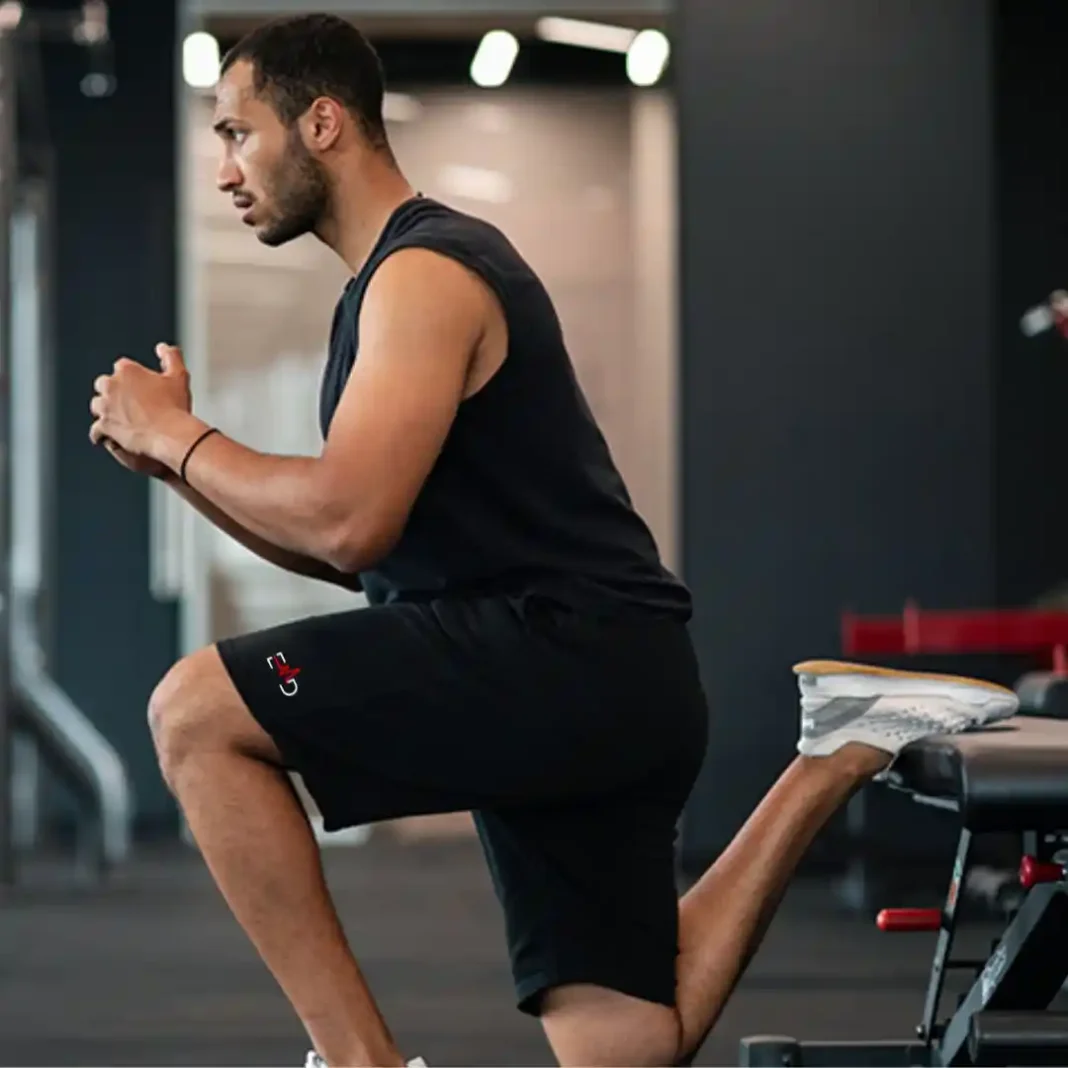Exercise Daily – In our fast-paced, modern world, achieving a good night’s sleep can often feel like an elusive goal. Stress, anxiety, and an overactive mind frequently stand between us and the restful sleep we crave. Enter yoga; a holistic practice that seamlessly blends physical postures, mindful breathing, and deep relaxation techniques to promote better sleep and overall well-being. Incorporating bedtime yoga routines into your nightly ritual can serve as a gentle yet powerful signal to your body that it’s time to unwind, relax, and prepare for restorative rest.
Yoga isn’t just about physical flexibility or strength; it’s a comprehensive approach that harmonizes the body, mind, and spirit. When tailored for sleep improvement, yoga can address the underlying causes of sleep disturbances, offering a natural and effective solution to enhance your sleep quality. Whether you’re struggling with insomnia, restless nights, or simply seeking to improve your sleep hygiene, yoga provides a versatile toolkit to help you achieve the peaceful slumber you deserve.

Benefits of Yoga for Sleep and Relaxation
One of the most significant barriers to a good night’s sleep is stress. The demands of daily life can leave our minds racing and our bodies tense, making it difficult to relax and fall asleep. Yoga offers a sanctuary from this stress by focusing on the breath and gentle movements, which help activate the body’s relaxation response. This response reduces the levels of cortisol, the stress hormone, allowing you to let go of the day’s worries and enter a state of calmness conducive to sleep.
Improved Sleep Quality
Yoga doesn’t just help you fall asleep faster, it can also enhance the quality of your sleep. Studies have shown that individuals who engage in regular yoga practice experience deeper and more restorative sleep. Yoga’s emphasis on relaxation and mindfulness helps regulate sleep patterns, increasing both the duration and depth of sleep cycles.
Calming the Nervous System
The autonomic nervous system, which controls involuntary bodily functions, has two main branches: the sympathetic nervous system (responsible for the fight-or-flight response) and the parasympathetic nervous system (responsible for rest and digestion). Chronic stress can lead to an overactive sympathetic nervous system, making it difficult to relax and fall asleep.
How Yoga Impacts the Sleep Cycle
A well-regulated nervous system is essential for achieving deep, restorative sleep. The nervous system governs how our bodies respond to stress and relaxation, directly influencing our ability to fall asleep and stay asleep. Yoga plays a crucial role in balancing the nervous system, particularly through practices like yoga nidra and restorative poses.
By maintaining a balanced nervous system, yoga helps ensure that your body can smoothly transition between wakefulness and sleep, promoting uninterrupted and restful sleep cycles.
Deep Breathing Techniques
Breathwork, or pranayama, is a cornerstone of yoga practice and plays a vital role in improving sleep quality. Deep breathing techniques slow down the breath, which has a direct impact on the nervous system. When you engage in deep, controlled breathing, you signal to your brain that it’s safe to relax, thereby easing physical and mental tension.

Best Types of Yoga for Better Sleep
Hatha yoga is one of the most widely practiced forms of yoga and is particularly beneficial for those seeking to improve their sleep. Hatha yoga emphasizes gentle postures (asanas) and slow movements, making it an ideal practice for winding down in the evening. The focus on alignment and controlled breathing helps release physical tension and calm the mind, creating a tranquil state that is conducive to sleep.
Yoga Nidra
Yoga Nidra, often called “yogic sleep,” is a powerful relaxation technique that guides practitioners into a state of deep rest while maintaining conscious awareness. This practice involves lying down in a comfortable position and following a guided meditation that systematically relaxes different parts of the body and mind.
Yin Yoga
Yin yoga is a slow-paced style of yoga that involves holding poses for extended periods, typically between three to five minutes. This approach targets the deeper connective tissues, such as ligaments, joints, and fascia, promoting flexibility and releasing chronic tension.
Top Yoga Poses for Sleep and Relaxation
Legs Up the Wall Pose is a restorative posture that promotes relaxation and reduces fatigue. To perform this pose, sit close to a wall and swing your legs up so that your heels rest against the wall while your back lies flat on the floor. This inversion helps improve circulation, relieve lower back tension, and calm the nervous system.
Benefits of Legs Up the Wall Pose include:
- Reducing swelling and improving circulation in the legs
- Alleviating mild backache and tension
- Promoting mental calmness and reducing stress
- Facilitating the transition into a restful state
Hold this pose for 5-10 minutes, focusing on deep, steady breaths to maximize its relaxing effects.
Child’s Pose (Balasana)
Child’s Pose is a gentle forward bend that naturally relaxes the back, shoulders, and neck. To enter this pose, kneel on the floor, bring your big toes together, and sit back on your heels. Extend your arms forward, resting your forehead on the mat. This pose encourages a sense of security and comfort, making it an ideal choice for bedtime.
Benefits of Child’s Pose include:
- Stretching the hips, thighs, and ankles
- Relieving tension in the spine and shoulders
- Calming the mind and reducing stress
- Promoting a sense of safety and relaxation
Hold Child’s Pose for 3-5 minutes, allowing your body to fully release tension with each exhale.
Reclined Butterfly Pose (Supta Baddha Konasana)
Reclined Butterfly Pose is a relaxing posture that targets the hips and lower back. To perform this pose, lie on your back, bring the soles of your feet together, and let your knees drop to the sides. You can place cushions or blocks under your knees for added support. This pose helps release tension in the hips and promotes relaxation throughout the body.
Benefits of Reclined Butterfly Pose include:
- Stretching the inner thighs and groin
- Relieving lower back tension
- Encouraging relaxation and reducing anxiety
- Enhancing circulation to the pelvic area
Stay in this pose for 5-10 minutes, focusing on deep, rhythmic breathing to enhance its calming effects.
Corpse Pose (Savasana)
Corpse Pose, or Savasana is traditionally used at the end of a yoga session to bring about deep relaxation. To practice Savasana, lie flat on your back with your arms slightly away from your body, palms facing up. Close your eyes and allow your entire body to relax, releasing all tension and focusing on your breath.
Benefits of Corpse Pose include:
- Promoting deep relaxation and stress relief
- Enhancing body awareness and mindfulness
- Reducing fatigue and improving overall well-being
- Facilitating a smooth transition into sleep
Stay in Savasana for at least 5-10 minutes, allowing your body and mind to fully absorb the benefits of your yoga practice.

Building a Bedtime Yoga Routine
Consistency is crucial when it comes to reaping the sleep-enhancing benefits of yoga. Aim to incorporate bedtime yoga into your nightly routine several times a week, ideally five to seven days. Regular practice helps establish a habit, signaling to your body and mind that it’s time to wind down and prepare for sleep.
Creating a Relaxing Environment
Setting up a calming space for your bedtime yoga practice is essential for maximizing its benefits. Here are some tips to create a soothing environment:
- Choose a Quiet Space: Select a quiet area in your home where you won’t be disturbed. This helps minimize distractions and allows you to fully focus on your practice.
- Dim the Lights: Soft lighting creates a peaceful ambiance. Consider using candles, dimmable lamps, or fairy lights to enhance the relaxing atmosphere.
- Use a Comfortable Yoga Mat: A supportive yoga mat or a soft rug provides cushioning for your joints and helps prevent slipping during poses.
- Incorporate Aromatherapy: Essential oils like lavender, chamomile, or sandalwood can enhance relaxation. Use a diffuser or lightly spray your space with your chosen scent.
- Limit Electronic Distractions: Avoid bright screens and electronic devices at least an hour before bedtime. Instead, opt for calming music or guided meditation recordings to accompany your practice.
- Maintain a Comfortable Temperature: Ensure the room is at a comfortable temperature—not too hot or too cold—to help your body relax.
By creating a dedicated, serene space for your yoga practice, you set the stage for a more effective and enjoyable bedtime routine.
Breathing Techniques and Meditation for Sleep
Box Breathing
Box breathing is a simple yet powerful technique that can significantly reduce anxiety and stress, making it an excellent tool for preparing your body for sleep. The method involves four equal parts: inhaling, holding the breath, exhaling, and holding the breath again, each for a count of four seconds.
How to Practice Box Breathing:
- Inhale: Breathe in slowly through your nose for a count of four.
- Hold: Hold your breath for a count of four.
- Exhale: Exhale slowly through your mouth for a count of four.
- Hold: Hold your breath again for a count of four.
Repeat this cycle for 4-5 minutes, focusing solely on your breath. This technique helps regulate your autonomic nervous system, promoting a state of calmness and readiness for sleep.
Guided Yoga Nidra Meditation
Yoga Nidra is a deeply relaxing meditation practice that can help you achieve a state of restful awareness. Guided Yoga Nidra sessions typically involve a series of verbal instructions that lead you through a body scan, breath awareness, and visualization techniques.
How to Practice Guided Yoga Nidra:
- Find a Comfortable Position: Lie down on your back in a quiet space, using props like pillows or blankets for support.
- Follow a Guided Script: Use a recorded Yoga Nidra session or follow a guided script to lead you through the practice.
- Body Scan: Mentally scan each part of your body, consciously relaxing each muscle group.
- Breath Awareness: Focus on your breathing, observing each inhale and exhale without trying to change it.
- Visualization: Engage in positive visualizations or affirmations to deepen relaxation.
Yoga Nidra can be practiced using various resources available online, including apps, YouTube videos, and guided audio recordings. This practice is particularly beneficial for those who find it challenging to quiet their minds at night.

Common Mistakes in Bedtime Yoga Practices
Overexerting in Evening Practice
One common mistake people make when practicing yoga before bed is overexerting themselves with vigorous or challenging poses. While high-intensity yoga can be beneficial during the day, it may have the opposite effect at night by increasing your heart rate and energizing your body, making it harder to fall asleep.
Avoiding Overexertion:
- Choose Gentle Poses: Focus on restorative and gentle poses that promote relaxation.
- Listen to Your Body: Pay attention to how your body feels and avoid pushing yourself into discomfort or strain.
- Maintain a Slow Pace: Move slowly and mindfully, allowing each pose to unfold naturally without rushing.
By keeping your bedtime yoga practice gentle and restorative, you ensure that it supports relaxation rather than hindering it.
Rushing Through Poses
Another common mistake is rushing through yoga poses, which can diminish the effectiveness of the practice in promoting relaxation. Yoga is inherently a mindful practice that encourages you to move at your own pace, paying attention to each breath and movement.
Avoiding Rushed Practice:
- Take Your Time: Hold each pose for an adequate amount of time to fully experience its benefits.
- Focus on Breath: Synchronize your movements with your breath, allowing each inhale and exhale to guide your practice.
- Be Present: Stay fully present in each moment, letting go of distractions and focusing on the sensations in your body.
By moving slowly and mindfully, you enhance the relaxing effects of your yoga practice, making it more effective in preparing your body for sleep.
Conclusion
Incorporating yoga into your bedtime routine is a simple yet transformative approach to improving sleep quality and achieving deep relaxation. Whether you’re battling insomnia, experiencing restless nights, or simply seeking a better night’s rest, yoga offers a natural and effective solution. Through consistent practice of gentle postures, mindful breathing, and meditation, yoga helps balance the body and mind, signaling to your system that it’s time to wind down and prepare for restorative sleep.
FAQs – Yoga for relaxation and sleep improvement
Q: Can yoga replace sleep medication for insomnia?
A: While yoga can significantly improve sleep quality and reduce symptoms of insomnia, it is not a direct replacement for sleep medication. Yoga offers natural and holistic benefits that complement medical treatments. If you are considering reducing or discontinuing sleep medication, it is essential to consult with a healthcare provider to ensure it is done safely and effectively.
Q: How long should I practice yoga before bed?
A: A 15–30 minute session is typically sufficient to help you relax and prepare for sleep. This duration allows you to engage in several poses, breathing exercises, and relaxation techniques without feeling rushed. Adjust the length based on your schedule and personal comfort, ensuring that the practice remains enjoyable and effective.
Q: Is Yoga Nidra safe for beginners?
A: Yes, Yoga Nidra is beginner-friendly as it primarily involves guided meditation and relaxation techniques rather than physical exertion. Beginners can easily follow guided sessions that lead them through the process, making it accessible and beneficial for anyone looking to enhance their sleep quality and relaxation.
Q: What should I avoid in bedtime yoga?
A: Avoid vigorous and highly energizing poses, such as intense backbends, deep twists, or fast-paced sequences, which can increase your heart rate and make it harder to fall asleep. Instead, focus on restorative, gentle, and calming poses that promote relaxation and prepare your body for sleep.
Q: Can yoga improve sleep quality over time?
A: Yes, regular yoga practice has been shown to enhance sleep quality and reduce issues related to insomnia. Consistency is essential for lasting benefits, as it helps regulate sleep patterns, reduce stress, and promote overall relaxation. Over time, yoga can lead to more restful and restorative sleep, contributing to improved physical and mental health.




